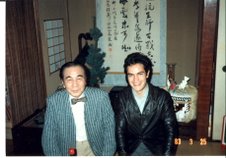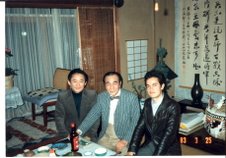Comment: Orkest De Volharding at The Sage Gateshead
Today, 30 November, Orkest De Volharding came to Tyneside, and their concert at Hall Two in The Sage Gateshead was inspirational. Christopher Fox, excellent composer and Professor at Brunel University, was there too, introducing the programme in his capacity as its curator. Before him, Ros Rigby came on stage to greet us, tactfully calling us an ‘elite audience’. There were, indeed, a disheartening small number of us. Where was everybody? Music students who profess an interest in composition? Their teachers, who want to keep abreast of things new? Professional musicians who play the instruments represented in the band, and would therefore greatly benefit from exposure to De Volharding’s muscular approach? Anyway, enough of that. Ros made us aware that BBC Radio 3 would be recording the concert, which added a certain electricity to the atmosphere, and not just that flowing to the microphones – surprisingly many of them for a live recording. Not much faith in the acoustics of Hall Two at the BBC, it seems.
The programme was neatly arranged in two halves, each made up of one funny piece, one impenetrable piece and one exciting piece, exactly in that order in both cases. Did Fox designed it deliberately with that structure in mind? Probably not, since the programme order was re-arranged at the last minute.
Andrew Hamilton’s Music for People Who Like Nature was amusing in its persistence on unmodulating triadic harmony and its pockets of manic repetition in designated sections of the ensemble. Although I would have welcomed more harmonic movement, and although I experienced a degree of tonic-dominant fatigue, I was amused by the mock-pastoral character of the whole thing.
Joanna Bailie’s Intermittence was enigmatically unengaged, as if written from an enormous psychological distance. The idea of re-examining the same musical argument from different viewpoints could have been used to create interesting contrasts, but instead we got a picture painted in monochrome with an economy of tools that failed to capture the imagination.
De Groote Muziek by Fox himself displayed clear thinking from the onset, with six strongly cadencial groups of four chords providing an arresting energy that did not let go of our attention until the end. Bright quasi-triadic sonorities juxtaposed to uproarious textural overlays gave the music a festive feel, which the musicians visibly enjoyed doing justice to. At the break I rushed to the bar needing a glass of rich red wine to celebrate the exhilaration of a most effective and characterful piece.
The second half opened with Concerto Grosso by Michael Wolters. This was amusing in its parody of baroque rhetoric, with Bach quotations smoothly integrated into a postminimalist flow. The joke was in the post-Kagelian stage displacements, where the musicians are invested with tireless itchy feet, moving constantly across the stage, often to play nothing more than a few notes at their new location before they move on somewhere else. Especially funny was the synchronised muting and un-muting of the three trombones, involving choreographed knee bends to pick up and put down the mutes on the floor.
During Laurence Crane’s Ullrich 1 and 2 I think I suffered a lapse of concentration, for which I apologise. It was Vogelvrij/Outlawed by Richard Ayres that made the strongest impression in the second half. This is music of the most uncompromising gesturality, blood relation to Varèse and Xenakis, but with a more immediate appeal. Textures, rhythm and pitch material are brought to subjection by a more generic necessity, the need to create broad gestures, spatial blocks of sound one can almost touch in their solidity. At times chords are recognisable from a former tonal life, but not always, and in any case it doesn’t matter, since in this discourse chords are only one of the things pitch superimpositions generate. You are made to listen more sonically here. Rhythm is perceptible as rate of movement or speed of gestural unfolding, but nothing you are likely to tap your finger to. This is musical sculpture of a very high order, except that it has colour too, and very vivid strokes of it. Richard Ayres, I don’t know anything about you, but wherever you are I wish you well, and I hope that you are writing more music.




No comments:
Post a Comment